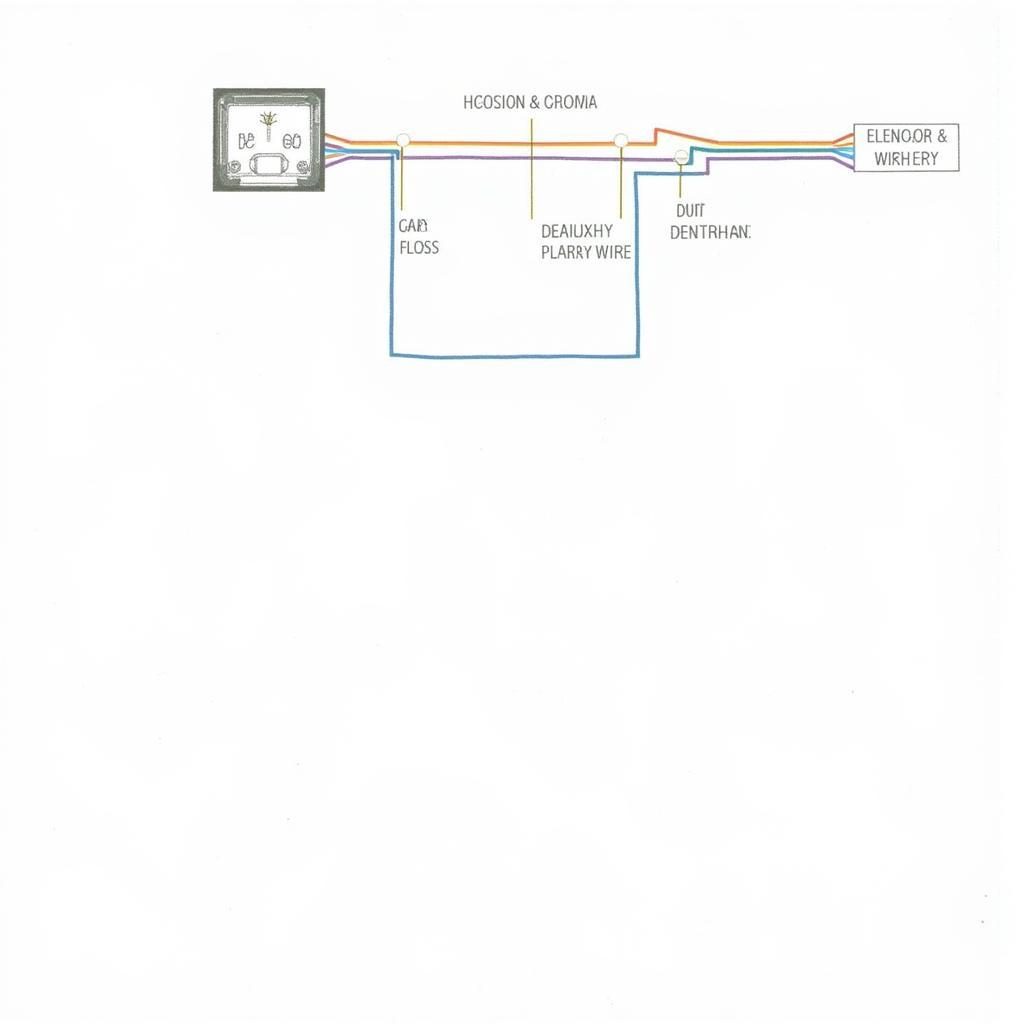Dealing with illuminated brake warning lights on your Jeep Wrangler’s dashboard can be a nerve-wracking experience. These lights, often accompanied by cryptic symbols, serve as your Jeep’s way of telling you something’s not right with the braking system. Ignoring them can compromise your safety and potentially lead to costly repairs.
This comprehensive guide delves into the common causes of brake warning lights in Jeep Wranglers and provides practical solutions for troubleshooting and resolving these issues. Whether you’re an off-road enthusiast or a daily driver, understanding your Jeep’s braking system is crucial for a safe and enjoyable driving experience.
Deciphering the Brake Warning Lights
Before we jump into the potential culprits, it’s crucial to understand what each brake warning light signifies:
- Red Brake Warning Light: This light typically indicates one of two things: either your parking brake is engaged, or there’s a serious problem with your braking system, such as low brake fluid.
- Anti-lock Brake System (ABS) Light: The ABS light illuminating suggests a potential issue with your Jeep’s Anti-lock Braking System. It could be a faulty sensor, a malfunctioning pump, or an issue with the ABS control module.
- Traction Control Light: While not directly related to the brakes, the traction control system often works in conjunction with your ABS. If this light is on, especially alongside a brake warning light, it could point towards a shared issue.
Common Causes of Jeep Wrangler Brake Warning Lights
Here are some of the most frequent reasons why your Jeep Wrangler’s brake warning lights might be on:
1. Low Brake Fluid
This is perhaps the most common and straightforward issue. Brake fluid is the lifeblood of your Jeep’s braking system, and a leak or low fluid level can significantly impact braking performance.
Solution:
- Check your brake fluid reservoir. It’s usually located near the firewall on the driver’s side and has a “Min” and “Max” marking.
- If the fluid level is low, carefully top it off with the recommended brake fluid type for your Jeep Wrangler. Consult your owner’s manual for the correct specification.
Important: If you need to add brake fluid frequently, it indicates a leak that requires immediate attention from a qualified mechanic.
2. Worn Brake Pads
Brake pads are designed to wear down over time. If you’re hearing a squealing or grinding noise when you apply the brakes, it’s a telltale sign that your brake pads are nearing the end of their lifespan.
Solution:
- Have your brake pads inspected by a mechanic.
- Replace worn brake pads immediately.
Pro Tip: “Regular brake inspections are crucial for off-road enthusiasts,” says John Smith, a senior mechanic at Off-Road Garage, “The demanding conditions of trails can accelerate wear and tear on brake components.”
3. Faulty Brake Light Switch
The brake light switch is responsible for activating your brake lights when you press the pedal. A malfunctioning switch can cause your brake lights to stay on constantly or not illuminate at all, often triggering a brake warning light.
Solution:
- Locate the brake light switch, usually positioned above the brake pedal arm.
- Inspect the switch for any signs of damage or wear.
- If necessary, replace the brake light switch.
jeep wrangler all brake warning lights
4. ABS Sensor Issues
Your Jeep Wrangler’s ABS relies on sensors at each wheel to monitor wheel speed and prevent wheel lockup during braking. A dirty, damaged, or faulty sensor can disrupt the ABS system.
Solution:
- Check the ABS sensors for any visible damage or debris.
- Clean the sensors and surrounding areas.
- If cleaning doesn’t resolve the issue, you might need to replace the faulty sensor.
5. ABS Module Problems
The ABS module is the brain of your Anti-lock Braking System. While less common, a failing ABS module can trigger the ABS warning light and potentially affect your Jeep’s overall braking performance.
Solution:
- Diagnosing and repairing an ABS module requires specialized equipment and expertise.
- It’s best to take your Jeep Wrangler to a qualified mechanic or dealership for diagnosis and repair.
Why You Shouldn’t Ignore Brake Warning Lights
Ignoring illuminated brake warning lights can have serious consequences:
- Compromised Braking Performance: A malfunctioning braking system puts you and others at risk.
- Costly Repairs: Ignoring minor issues can escalate into major, expensive repairs down the line.
- Voided Warranty: Some warranty claims might be denied if it’s determined that neglecting warning lights contributed to the damage.
Preventive Maintenance Tips
Keeping your Jeep Wrangler’s braking system in top shape involves:
- Regular Inspections: Have your brakes inspected by a qualified mechanic at least once a year or every 12,000 miles.
- Timely Fluid Changes: Brake fluid should be flushed and replaced according to your Jeep’s maintenance schedule.
- Quality Parts: Always use high-quality brake pads, rotors, and other components for optimal performance and longevity.
Conclusion
Addressing brake warning lights promptly is paramount for ensuring your safety and the well-being of your Jeep Wrangler. While some issues might seem minor, it’s always best to err on the side of caution and consult with a qualified mechanic to diagnose and resolve any braking system problems. Regular maintenance and a proactive approach to warning lights will keep your Jeep Wrangler’s braking system in peak condition, allowing you to enjoy countless miles of adventure.


